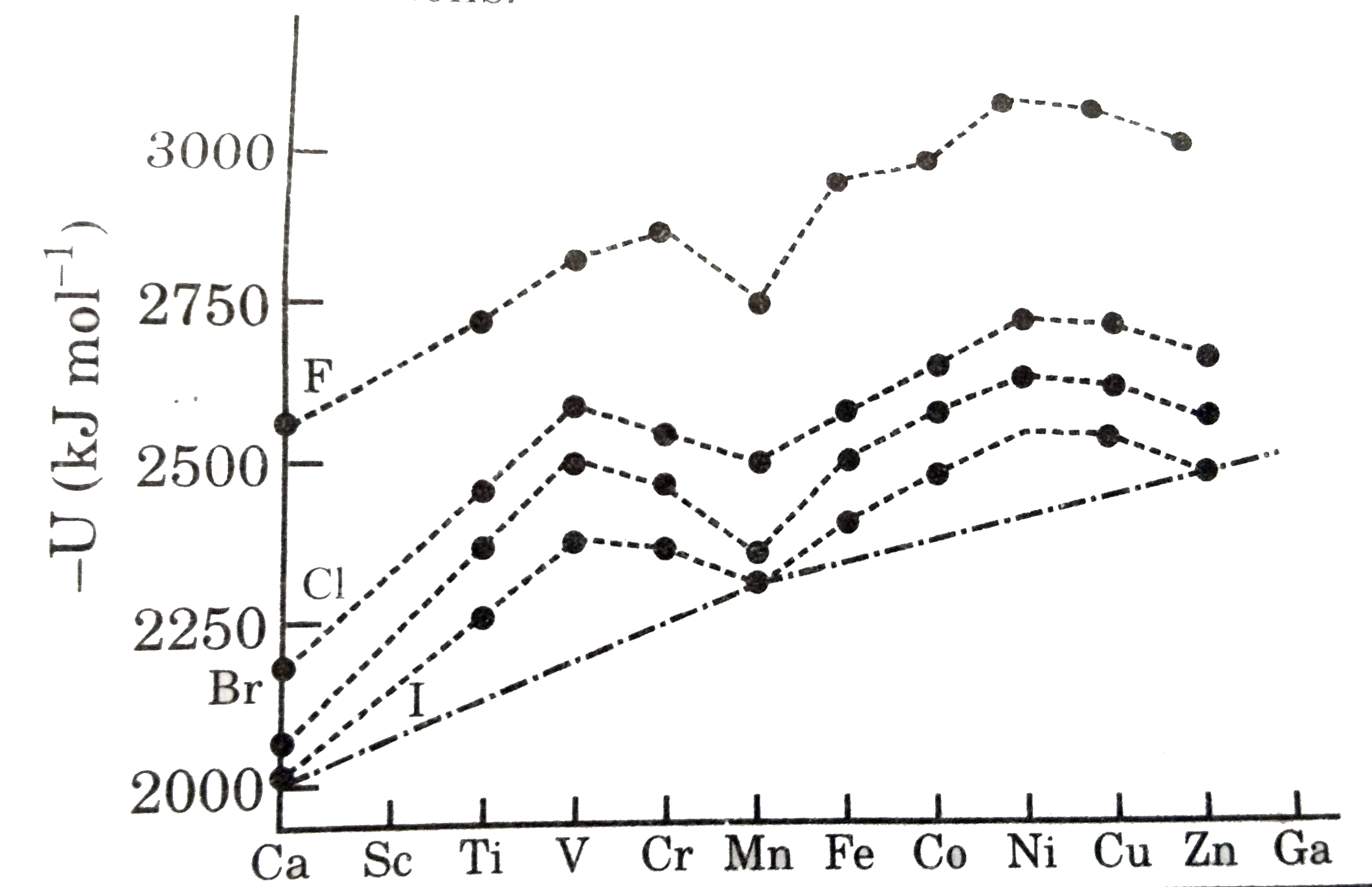Crystal field theory provides correct electronic distribution of central metal under surrounding ligannd field, hence it clearly explains magnetic moment, colour of a complex.
Q. In which of the following complex transition of electron occurs from one shell to other shell of central metal.
[Fe(H2O)5(NO)]2+
[Co(H2O)6]2+
[Rh(NH3)6]2+
[Ni(CN)6]4−
The correct Answer is:C
Topper's Solved these Questions
- BOOK - VK JAISWALCHAPTER - CO-ORDINATION COMPOUNDSEXERCISE - ASSERTION-REASON TYPE QUESTIONS26videos
CO-ORDINATION COMPOUNDS
- BOOK - VK JAISWALCHAPTER - CO-ORDINATION COMPOUNDSEXERCISE - LEVEL 1202videos
CO-ORDINATION COMPOUNDS
- BOOK - VK JAISWALCHAPTER - CHEMICAL BONDING (BASIC)EXERCISE - Level 3 (Passive 11)6videos
CHEMICAL BONDING (BASIC)
- BOOK - VK JAISWALCHAPTER - d-BLOCK ELEMENTSEXERCISE - SUBJECTIVE PROBLEMS6videos
d-BLOCK ELEMENTS
Similar Questions
Though CFT is used for explaining transition metal complexes yet it can also be used for explaining the variation of lattice energies of transition metal compounds. For example halides of bivalent metal ions of 3d-series (MX2 . It is found that in the crystal of such metal halides each metal ion is octahedrally surrounded by halides ions and vice-versa, hence these compounds can be treated at par with octahedral complexes. In the following figure, variation of lattice energy of MX2 is given with atomic number of metal ions.

In which of the following complexes, the metal ion has lowest ionic radius?View SolutionCrystal field theory provides correct electronic distribution of central metal under surrounding ligannd field, hence it clearly explains magnetic moment, colour of a complex.
Q. Which of the following hydrated complex ion has high intensity colour in aqueous solution.View Solution
Knowledge Check
- Question 1 - Select One
Crystal field theory provides correct electronic distribution of central metal under surrounding ligannd field, hence it clearly explains magnetic moment, colour of a complex.
Q. Which of the following complex is high spin?AK4[Fe(CN)6]−B[PtCl4]2−C[CoF6]3−D[Ni(NH3)6]2+ - Question 2 - Select One
Crystal field theory provides correct electronic distribution of central metal under surrounding ligannd field, hence it clearly explains magnetic moment, colour of a complex.
Q. Which of the following complex is high spin?AK4[Fe(CN)6]−B[PtCl4]2−C[CoF6]3−D[Ni(NH3)6]2+ - Question 3 - Select One
Crystal field theory provides correct electronic distribution of central metal under surrounding ligannd field, hence it clearly explains magnetic moment, colour of a complex.
Q. Which of the following hydrated complex ion has high intensity colour in aqueous solution.A[Mn(H2O)6]3+B[Co(H2O)6]2+C[Ni(H2O)6]2+D[Mn(H20O_(6)]2+
In which of the following complexes the valence shell of central metal ion does not have d6 electronic configuration?
View SolutionWhich of the following paramagnetic complex with two unpaired electrons in t2g orbital according to crystal field theory
View SolutionSome ligands not only donate their lone pair to the central metal atom but also accept the electron cloud from the central metal atom. This is known as synergic bonding.
Q. In which of the following complexes is the bond order of C-O bond minimum ?View SolutionThe crystal field theory assumes interaction between metal ion and the ligands as a purely electrostatic and ligands are supposed to be point charges.
Q. Amongst the following complexes which has square planar geometry?View SolutionThe crystal field theory assumes interaction between metal ion and the ligands as a purely electrostatic and ligands are supposed to be point charges.
Q. Amongst the following complexes which has square planar geometry?View Solution


